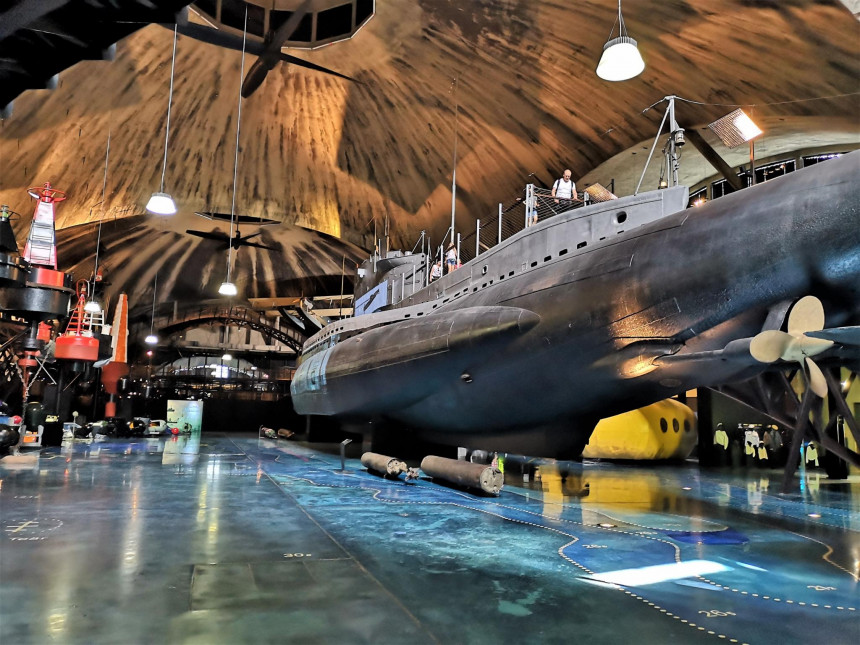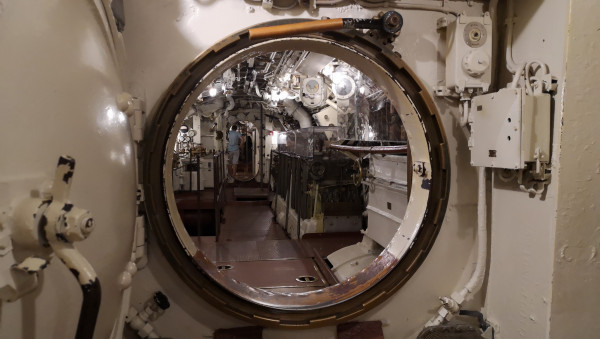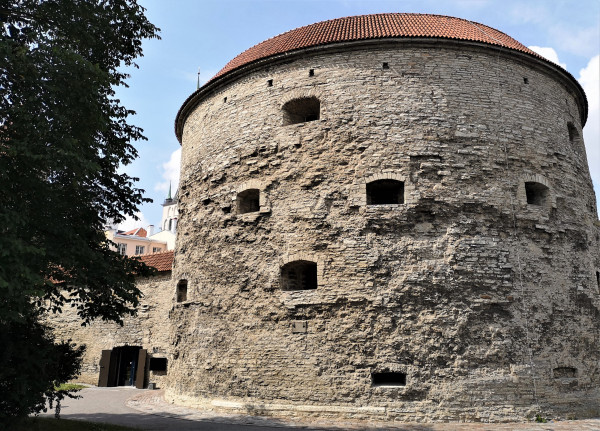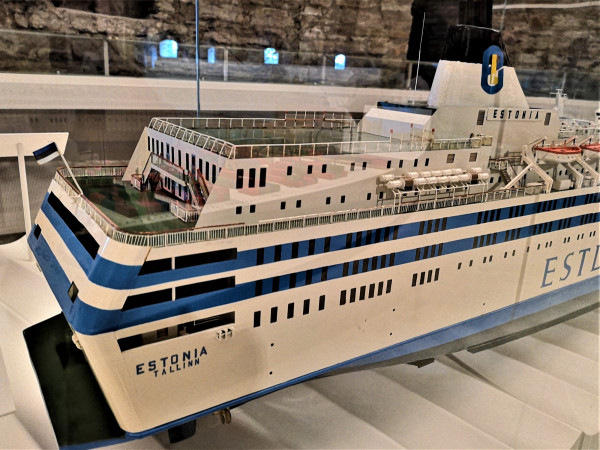The most famous Estonian ships at sea and in its depths

Estonia has a long maritime history, full of things to be both proud of and sad about. This history can be seen at the Estonian Maritime Museum, located in Tallinn's Seaplane Harbor and Tallinn's ancient fortification tower Fat Margaret.
A submarine and a seaplane
I was looking forward to visiting this museum the most while traveling in Estonia. I had wanted to go there last year, but Covid-19 canceled those plans. However, now it's easier to see this popular museum and all its 200 exhibits, including the EML Lembit submarine, the seaplane Short 184, the wreck of the ship Maasilinn (the oldest ship of Estonian origin), because there are not as many visitors as before the crisis. This allows you to view everything calmly and without haste. You can explore the EML Lembit submarine to the smallest detail.
When walking on its deck, getting into the Lembit's hull, turning the periscope, you can imagine how Lembit went on its first voyage more than 80 years ago (in 1936). In fact, two Estonian submarines - Lembit and Kalev - went on the first voyage then. They were both built in England on behalf of the Estonian state. However, a few years after the first submarine voyage, Estonia, like the other two Baltic states, Latvia and Lithuania, was occupied. Both submarines came into the possession of the Red Army. During World War II, Lembit and Kalev took part in several combat operations. During the war, Kalev disappeared without a trace. Historians still do not know what really happened to it - whether it sunk, had technical problems or maybe it was stolen. As absurd as this theory may sound, it cannot be completely abandoned.
Lembit was used as a training submarine in later years until it was decided to cut it into scrap metal in the 1990s.

A guide from the Maritime Museum said that Lembit had returned to Estonia thanks to the solidarity of the sailors, namely at a time when Russia was about to scrap the submarine, a high-ranking Russian naval officer told Estonian museum specialists about this, who immediately acted and achieved that Lembit was delivered to Tallinn. It has now been restored and looks exactly like when it swam on the seabed. In 2011, NRA wrote about how the Lembit submarine, which is now in the museum and can be seen, was lifted out of the water in a technically complex operation.
From 1919 to 1933, Estonia owned 8 seaplanes. Unfortunately, none has survived to this day. The museum displays an exact full-size copy of the seaplane Short Brothers.
Lembit is the only submarine in this series that has survived to this day without major reconstruction. Even in Britain, where Lembit was built, submarines from this period have not survived. Until May 21, 2011, Lembit was the world's oldest floating submarine.
However, the Seaplane Harbor itself, which has the museum in its hangar, is also unique. This hangar was built in 1917 as part of the fortification system guarding St. Petersburg. Then, until 1940, the Estonian Air Force used this place to repair seaplanes. The building itself is one of the most remarkable buildings of the 20th century from the point of view of engineering. It is one of the first buildings in the world to have such huge reinforced concrete domes without any support. The Maritime Museum, located in the Seaplane Harbor, offers visitors to take a photo while dressed in naval force uniforms, drive a plane and a coast guard armored vehicle in a simulator, as well as participate in other activities that make visiting the museum exciting for everyone, both young and old.
Reconstruction of the museum reveals a canal under Tallinn

The Estonian Maritime Museum is located in two places: one, the already mentioned Seaplane Harbor with the submarine Lembit, the other - the ancient Fat Margaret fortification tower of Tallinn. Initially, Fat Margaret was a defensive tower, later - a prison. In 1938-1940, the auxiliary building of the prison and the front gate building were reconstructed into the premises of the City Museum.
In 2015, during the reconstruction of the museum, the builders and then researchers found something unbelievable - along with various ancient objects that had been lying on the ground for thousands of years, a medieval canal was found, through which rainwater and sewage probably flowed.
Getting acquainted with the museum's exposition, it is possible to trace the history of Estonian sea voyages, from medieval merchant ships to modern passenger transport. In total, the museum has more than 700 exhibits, some of which are ship models. The museum guide said that in the past, ship models, which were exact miniature copies of real ships, were created not for the pleasure of children or collectors, but for practical reasons. This was necessary in cases where the real ship broke and needed to be repaired - it was easier to show the required detail than to tell.

The model of the ferry Estonia can also be seen in the museum. It is still not known exactly what really happened to this ferry, which took the lives of 852 people, including the lives of 24 Latvians. It is one of the tragic pages of Estonian maritime history.
The Maritime Museum has an audio guide in 20 languages, including Latvian. The text was recorded in Latvian by the popular Latvian actor Gundars Āboliņš. His story lasts 45 minutes.
The museum also gives the visitors the opportunity to stand on the ship navigation bridge, which is based on the most modern ships in the Baltic Sea; to get an idea of modern vessel traffic density, vessel types, their operation and industrial fishing using a digital application; to solve navigation tasks of different levels of difficulty by displaying navigation signs; to send a ship en route, leaving information in the log that will remain there even after the visit to the museum.
The Maritime Museum is open Tuesday through Sunday from 10 a.m. to 7 p.m., closed on Mondays.
*****
Be the first to read interesting news from Latvia and the world by joining our Telegram and Signal channels.
